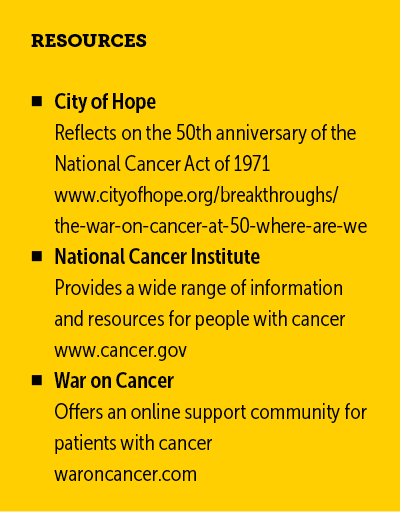How Can a Suicide Screening and Prevention Procedure Be Implemented in a Cancer Center?
Suicide in patients with cancer is most common in the first months after a diagnosis. With an overall risk that is already twice that of the general population, the risk increases to as much as 13 times the average suicide risk in those newly diagnosed with cancer.
Jump to a section
Suicide in patients with cancer is most common in the first months after a diagnosis (Johnson, Garlow, Brawley, & Master, 2012). With an overall risk that is already twice that of the general population, the risk increases to as much as 13 times the average suicide risk in those newly diagnosed with cancer (Kumar, Chaudhary, Soni, & Jha, 2017). Current policies at the University of Kansas Cancer Center only address how to respond to suicidal ideation in the inpatient care areas. Fewer resources are available in ambulatory settings.
I was particularly motivated by the issue of suicidal ideation in the ambulatory care setting when a nurse colleague came to me in distress because she did not have the tools to assist a young patient diagnosed with melanoma who was suicidal. As the assistant director of nursing practice, my role includes improving patient outcomes, as well as enhancing the quality and safety of patient care. Upon recognizing this gap in supporting ambulatory clinical care, a partnership with our psychiatry department was cultivated. Together, nursing leaders and onco-psychologists incorporated evidence into ambulatory procedural practices and policy development.
Our education strategy was to bring awareness to ambulatory staff about the vulnerability of certain cancer diagnoses in which suicide is more common: lung, prostate, pancreatic, esophageal, stomach, and head and neck cancers. To raise staff awareness, standardized training was produced for ambulatory clinicians on how to manage telephone calls from patients who express suicidal thoughts. Advanced practice providers (APPs) across all eight cancer center locations were trained to assess and triage patients by using a crisis safety planning worksheet. The training methodology consisted of a Microsoft PowerPoint® presentation followed by case scenario simulations to engage the learners in the process. Another aspect was the development of a “badge buddy,” a quick reference tool for clinicians to clip onto their work ID badges to help them manage suicide calls and provide hotline numbers to patients.
With limited accessibility to on-site psychologists at eight distinct cancer center locations, patients were referred to our APPs for assessment and triage. If a patient answered “yes” to a suicide question on the high-risk needs assessment, the APP was instructed to use the Columbia–Suicide Severity Rating Scale Screen (C-SSRS) to gather detailed information that resulted in three possible workflow outcomes: (a) the APP will refer the patient for an appointment with a psychologist when presented with ideation without means/plan or intent to harm self; (b) the APP will refer to a prompt psychologist appointment plus crisis safety planning for patients with ideation with means/plan but no intent to harm self; and (c) the APP will admit the patient to the hospital to assess for imminent threat when the patient has ideation with means/plan and intent to harm self.
By more accurately identifying at-risk patients, the C-SSRS allows our ambulatory resources to be focused on those who need them most and reduce unnecessary interventions on individuals who would have been otherwise misidentified as a risk. Patients avoid unnecessary hospitalization. Being knowledgeable and skilled with suicide screening can save lives and decrease heightened distress. As an oncology nurse practicing in the ambulatory setting, assessing and triaging for interventions connects me to my patients, validates their feelings, and provides a safe environment for them to express their emotions. 
About the Author(s)
Thu Janes, DNP, MS, RN, NE-BC, is an assistant director of nursing practice at the University of Kansas Cancer Center in Westwood. Janes can be reached at tjanes@kumc.edu, with copy to CJONEditor@ons.org.
References
Johnson, T.V., Garlow, S.J., Brawley, O.W., & Master, V.A. (2012). Peak window of suicides occurs with the first month of diagnosis: Implications for clinical oncology. Psycho-Oncology, 21, 351–356.
Kumar, V., Chaudhary, N., Soni, P., & Jha, P. (2017). Suicide rates in cancer patients in the current era in United States. American Journal of Psychiatry, 12, 11–14.

